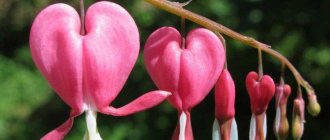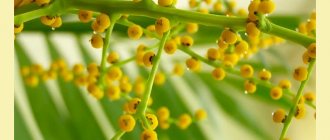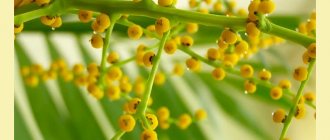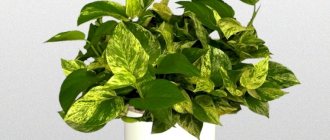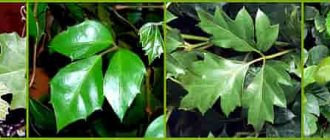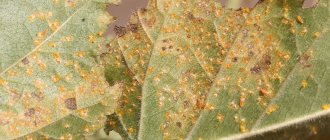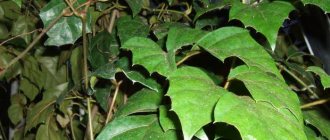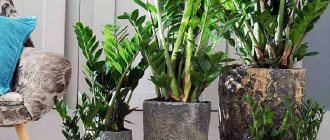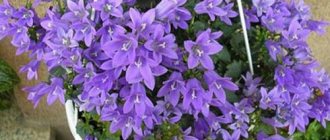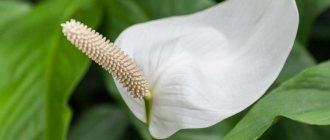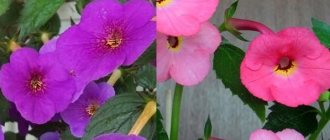Birch is an unpretentious indoor flower, suitable for keeping in low light conditions. Flower growers also love it because it is undemanding to care. The main thing is that the stems and leaves remain healthy, because the climbing vines are the main decoration of this plant. We'll tell you how to properly grow and care for birch trees at home.
Features of caring for a houseplant birch
Birch trees can be found not only in apartments, but also in public institutions. Often, it is used to decorate the foyers of hospitals, clinics, and libraries. And this indicates that the cissus will grow well without requiring close attention.
Lighting
The flower will grow equally well in a sunny room or in a corridor with artificial lighting
Perhaps the only point that a gardener should pay attention to is direct sunlight. Birch leaves can get burned, especially at midday, so placing the pot with the plant on the windowsill is not recommended
It is better to use hanging flower pots, which should be placed on the walls near the window.
Air temperature and humidity
Houseplant birch - care does not require maintaining a certain temperature in the room. Cissus is hardy and will thrive between +15.5°C and +25°C. For this reason, you can safely take it out onto the balcony (in summer), but be sure to cover it from rain and hail.
The birch tree does not have any special requirements for air humidity, but, like any living plant, it will not refuse refreshing drops of moisture. It is recommended to spray the plant with warm water at least once a week, and on hot summer days and during the heating season - 2-3 times a week.
Over time, a lot of dust collects on the leaves of cissus, so you need to periodically rinse the shoots in the shower. To prevent the substrate from being flooded with water, the pot should be placed in a plastic bag and tied at the base of the plant.
Watering and fertilizing
When caring for a houseplant birch tree, you need to try to control the condition of the substrate. It should not be allowed to dry out excessively, but at the same time, dampness is no less destructive for the flower. It is better to water the birch tree every day or every other day, but little by little. This rule applies only to the spring and summer period. In winter, especially if the air temperature is below +18 °C, watering is reduced. The water used is soft and warm, free from chlorine impurities. Every week it is advisable to loosen the top layers of soil.
The birch tree is fed only in the spring and summer months; at other times of the year it does not need additional nutrition. The frequency of fertilizing is once every 15 days. It is advisable to use both mineral fertilizers and organic matter, alternating them. From mineral compositions, you should choose a complex fertilizer for decorative foliage plants. Among the organic ones, a concentrate made from the waste products of earthworms has proven itself well; it can be purchased at large flower shops.
Pruning an indoor birch tree
During the spring care of a birch houseplant, it is necessary to carefully examine the bush and conduct an “audit” of the shoots. Over time, the old branches become bare at the bottom, and the plant loses its former attractiveness. Cissus tolerates even radical pruning, so shoots that have lost their decorative appearance can be cut off at a level of 10 cm from the ground. Many new side shoots will soon appear; the process can be accelerated with the help of fertilizers with a predominance of nitrogen. If it is a pity to dispose of the cut shoots, they can be used as cuttings to propagate the plant.
Diseases and pests of birch
Cissus is resistant to many diseases and most often, errors in care lead to loss of decorativeness. The most common problems:
- the leaves have become small, growth has slowed down - the flower is suffering from a lack of nutrients;
- the leaves turn yellow and gradually fall off - irregular watering, although the plant can withstand short-term drought.
Careless care of the birch houseplant, which involves excessive watering, often leads to rotting of the root system. In this case, the cissus looks drooping despite the fact that the substrate is well moistened. It is urgent to remove the flower from the pot, cut off the rotten roots, and completely replace the soil with new one.
Among the pests, spider mites or aphids can sometimes be seen on the leaves. With minor damage, gardeners limit themselves to spraying with a soap solution. If the situation is advanced, then it is better to purchase highly effective drugs, for example Fitoverm.
What care does a birch tree require?
Caring for this flower is quite simple. A birch tree can grow successfully in any place, but partial shade is best suited for it. It can also be planted in a well-lit place, but so that the sun's rays do not burn its beautiful foliage. Window sills on the south side are contraindicated for this flower. For full growth, the birch tree must be provided with the correct temperature - at least 15 degrees.
It is recommended to water indoor flowers only with settled water. Watering should be moderate, since birch trees do not like excess moisture.
In addition, water for irrigation should be warm or room temperature. Water taken for irrigation from the tap contains a lot of chlorine, which negatively affects the growth of the root system of the flower. Not a single indoor flower will like this type of watering liquid. Birch is an indoor plant that responds very well to watering in the evening in the summer, after sunset. When caring for a flower, one rule applies - the higher the plant is, the more often it needs to be watered.
Rest period
In winter, the birch tree enters a dormant period. The plant needs to be watered with warm water in the morning. The water temperature should be about 25 degrees
Compliance with these conditions is very important, otherwise the flower may experience a growing season, which will not have a very good effect on its general condition. When watering, the plant requires a competent approach
To distribute the liquid evenly, the birch tree is watered from a watering can with small holes. If water seeps into the ground fairly quickly, this is a normal process. But if the liquid leaves slowly, then this indicates that it is time to change the soil for the flower.
Caring for a birch tree, like many other indoor flowers, requires constant attention. Cissus needs good lighting, regular watering and feeding. By observing all these conditions, you can get a very beautiful shrub with decorative foliage that will delight you with its beauty all year round. Despite the fact that the birch houseplant is easy to care for, there are some rules that must be followed in order to grow a healthy and beautiful flower.
A prerequisite is to loosen the soil twice a week.
Complex and mineral fertilizers are ideal as fertilizers. They can be flavored with macro and microelements.
You need to fertilize the flower once every two weeks. Experienced gardeners draw up a schedule according to which they apply fertilizing, water and fulfill other requirements for the active and full growth of cissus.
Pruning and replanting
Caring for a birch tree also includes pruning and periodic replanting - they are necessary to rejuvenate the flower. To plant a flower, you must use a soil mixture of turf, leaf soil, humus and coarse sand in a ratio of 2:2:2:1.
For the plant to feel comfortable, it needs to choose the right pot. It is best to use a ceramic flowerpot. It is breathable and allows you to regulate soil moisture. A houseplant planted in such a pot will need to be watered more often.
Plastic flowerpots do not have these properties. Evaporation of moisture in them occurs only from the surface of the soil. Therefore, caring for a flower in such a container will be difficult. Watering the flower is recommended only when the soil dries out to prevent waterlogging. If watering is very poor, the cissus may be affected by spider mites. When replanting a bush, you need to take into account the volume of the root system. The more space the roots take up, the larger the pot should be.
Be sure to put 1-2 cm of drainage at the bottom of the pot
When replanting, it is very important not to damage the root system of the flower. You should also distribute it correctly inside the pot.
A soil mixture is placed on top of a small drainage layer, which fills one third of the pot. A birch tree placed in the center is gradually sprinkled with soil mixture. The upper root system should not reach 3-4 cm to the surface. When planting, the soil should not be compacted.
The planted birch tree is immediately watered and placed in a dark place for 2-3 days. The plant should not be fertilized at first, since the new soil has all the nutrients.
Ivy
In the Middle Ages in Greece and Rome, ivy was not only a symbol of devotion, but also acted as one of the most common talismans for young girls. It was believed that it symbolizes not only the possibility of a successful marriage, but also allows the owner to maintain youth and attractiveness for a long time. To do this, it was enough just to wear a sprig of ivy on the chest.
As for the present time, in the East they believe that it increases the vital energy of the owner, prolonging his life. At the same time, in post-Soviet territories there is an opinion that ordinary ivy, widespread in the southern regions, attracts misfortune to the house. In addition, it is not recommended to place it in the home of newlyweds, as it can cause discord and quarrels in families, as a result of which men leave their families.
It is noteworthy that ivy is not recommended to be planted by followers of Feng Shui philosophy, who claim that this plant, like most climbing plants, is capable of taking the energy of health and love from the house.
Home flower birch: signs
There are some superstitions and signs associated with the birch houseplant. People believe that this flower brings men out of the house. There is no direct evidence of this, but still many do not risk having this flower at home. Everyone has their own opinion on this matter. Below are some of them.
Oksana, 30 years old, writes: “I am of the opinion that it is undesirable to keep a birch tree in the house. It seems to me that this is not all fiction. I no longer keep this plant in my apartment; I threw it out a long time ago. And I want to say that my personal life has improved. I don’t know, of course, maybe it all coincided like that, but I don’t want to take any more risks.”
Milana, 35 years old, writes: “Birch is a harmless plant, and it is also very unpretentious and grows quickly. Copes well with gas pollution. I don’t think this beautiful plant can negatively affect family relationships.”
Lena, 27 years old, writes: “If you believe in omens, they will definitely come true. My family grew several of these birch trees. They grew lushly and beautifully, but in our house we had a woman’s monastery. The men didn’t stay in the family for long until we put the cissus in the entrance.”
Olga, 29 years old, writes: “I once had a birch tree growing, but, unfortunately, it recently dried up. I believe that this flower cannot keep men out of the house. My mother-in-law has been growing this plant for decades. Despite this, she has lived with her father-in-law for 40 years in perfect harmony. My husband and I are doing well too.”
Home flower birch, care. Video
Rules of care
Feeding is carried out once every two weeks. To do this, use complex fertilizers for indoor plants.
The soil is loosened once every two weeks. This is necessary to saturate the soil with oxygen, which the plant’s roots will feed on. Thanks to this it will grow faster.
Young plants require moderate watering, periodic loosening and spraying.
In general, birch does not like excess moisture in the soil. In the summer, you need to ensure that the soil is always moist. In summer, it is better to water in the evening, when the sun is already setting. In winter, watering can be reduced, but you also need to make sure that the soil does not turn into a dry earthen lump. It is recommended to use settled water, about +25°C
In addition, the air in the room with the birch tree must be sufficiently humidified, this is important in winter. Lack of rain, heating in the apartment - all this has a bad effect on the health of the plant
Therefore, spraying is necessary.
It is advisable to water your pet using a watering can - this will evenly moisten the soil. It is imperative to observe how water is absorbed into the soil. If everything happens quickly, then the container is still suitable and there is no need to replant it yet. And if water lingers on the soil surface, then you need to think about changing the substrate.
Roicissus has a slight weakness for showering. You can take the plant to the bathroom and water it with a gentle stream. If the birch tree has become too large, then you can not take it into the bath, but simply wipe each leaf separately with a soft cloth.
Plant care
The indoor flower gets along very well indoors, and there are no special requirements for caring for it. Of course, like any other houseplant, cissus needs to follow certain rules of care, however, they are not anything complicated.
Care begins with choosing the right location for the plant pot. Despite the fact that birch can thrive in both bright and slightly darkened rooms, this plant really does not like direct sunlight. If you ignore this condition, the leaves of the plant will begin to dry out very quickly, turn yellow, and then fall off. Therefore, you should always make sure that the sun does not directly hit the flower. You should not leave the pot with the plant on the balcony or open air, and do not allow drafts to enter the room. The optimal room temperature for a birch tree will be about 20 degrees, plus or minus three degrees. As for the winter season, the plant feels best at a temperature of 14-16 degrees, although it can easily adapt to warmer air temperatures. The birch tree grows best if the soil in the pot is systematically loosened - this will help air penetrate better into the soil.
So an important condition for care is loosening the soil, which should be carried out at least once every seven days. As for humidity, cissus grows well in both dry and high humidity levels in rooms
So there shouldn’t be any problems with choosing a place where you can place a birch tree - it could be a living room, a bedroom, or even a kitchen. The plant favors water procedures. That is, in order for the vines and leaves of the birch tree to delight you with their abundance, you can periodically wash them under the warm streams of the shower. The vines and leaves should be washed so that water does not penetrate the soil. If washing seems like a risky activity, then it can be replaced with spraying from a spray bottle. Such care is especially important during the extremely warm winter season.
An important condition that must be met when caring for a birch tree is the frequency of watering the plant. The flower does not need to be watered too much; the soil needs to be moistened only if its top layer has noticeably dried out. Birch loves consistently moist soil. At the same time, it is very important not to allow water to stagnate in the pot, and at the same time do not forget to water the cissus at the first signs of drying out of the top layer of soil. When watering, you must use only warm, settled water. If possible, it is best to filter the water a little so that as few chlorine particles as possible remain in its composition. And if after watering a lot of liquid has formed on the tray with the flower, then it is recommended to immediately drain it and carefully loosen the top layer of soil.
Care includes pruning the plant. This procedure will help give the birch a suitable shape and size. Moreover, pruning helps rejuvenate the plant. Only old shoots and those vines that have reached a great length should be trimmed. Regarding fertilizing, for better growth of birch trees you can use any complex fertilizer intended for this type of crop. If the flower is not fed, this will lead to the fact that it will stop developing and giving an increase in green mass. The frequency of fertilizing should not exceed once every two weeks during the growing season of the flower. As for the winter season, fertilizing can be excluded until the end of February, but only if the temperature in the apartment is more than twenty degrees Celsius. If the temperature is below this mark, then it is recommended to feed the flower once every thirty days.
As you can see, caring for a domestic birch tree is not difficult. If you follow simple requirements regarding the growing conditions of the plant, it will delight its owners with its beauty and sophistication for many years.
Reproduction methods
The flower reproduces well at home in two main ways.
- The easiest way to propagate a flower is through cuttings. This can be done at any time of the year. Cuttings are carried out as follows: carefully cut from the very top several shoots on which there are formed buds. After this, rooting is carried out - either in water or by transplanting into soil, with the addition of peat and sand. In order for the cuttings to take root and take root faster, they need to be placed in a bright, warm place. The temperature should not be less than 20 degrees. If you do everything correctly, the plant will have full roots within two to three weeks. To get a voluminous plant, you need to simultaneously plant at least three or four cuttings in one pot.
- The second option is to divide the flower bush. To do this, an adult plant must be divided into several individual specimens, and then planted in different pots. The roots should be separated very carefully with a sharp tool so as not to damage them. Otherwise, the plant simply will not take root and will die.
It should be remembered that domestic birch never reproduces using seeds.
Description of the plant
Birch is the popular name for a houseplant, which is actually called cissus. In nature, there are more than three hundred cissus - perennial plants that are vines, subshrubs and shrubs (see photo). The name of the flower comes from the Greek word "kissos", which means "ivy". But there is nothing in common between ivy and cissus, except for some external similarities.
The birthplace of birch is the tropical and subtropical forests of Australia, Asia, Africa and South America. At home, the plant does not bloom. It is considered decorative because of the carved shape of the leaves, densely covering the thin climbing shoots, reminiscent of birch branches. The size, shape and color of the leaves depend on the type of cissus.
This is interesting! There are signs according to which the birch tree survives from the house of men. If a flower is grown by a married woman, this will lead to discord in the family and possible divorce. If an unmarried girl contains cissus, then it will be difficult for her to improve her personal life. In reality, there is no evidence that signs work.
Birch houseplant location
Since this plant is unpretentious, it can be placed in a bright or semi-shaded place, but direct sunlight should be avoided. Does not grow well in a dark corner without windows. The temperature in winter should be at least 15C.
It is necessary to water moderately, making sure that the earthen ball is kept moist at all times. Under no circumstances should you overfill. The plant should be watered with settled water at room temperature; it is absorbed much faster. Cold water straight from the tap can harm the plant, as it contains chlorine, which inhibits root growth.
In summer, the birch tree must be watered in the evening, after the sun has set. The drier and hotter the air in the room, the more often it is necessary to water. In winter, when the plant is dormant, it is watered in the morning with not very warm water (no more than 25 degrees), so as not to cause the plant to awaken prematurely.
For watering, it is best to use a small watering can, evenly moistening the soil around the plant and trying to direct the stream of water to the edges of the dish. When moisture is not absorbed for a long time, this is an abnormal phenomenon. Most likely, the soil has become acidic and needs to be changed.
Birch grows well and looks great when regularly sprayed with water at room temperature.
Care and replanting of birch houseplants
.In the summer, the soil must be loosened at least twice a week. Do not forget about feeding the plant with complex mineral fertilizers with the addition of macro and microelements once every two weeks. In the spring, if necessary, you need to replant the birch tree. The soil should consist of turf soil, humus and leaf soil, with the addition of coarse sand in the ratio (2:2:2:1). For planting or replanting, you also need to choose a pot.
Pots have certain properties, this must be taken into account when planting plants. So, a ceramic pot “breathes” well and allows air and moisture to pass through the walls well, so the plant will need to be watered more often; in a plastic pot, on the contrary, water evaporates only from the surface, so you will need to be more careful with watering, trying not to dry out the soil. The more roots a plant has, the larger the pot it needs.
Drainage is poured into the pot in a layer of 1-2.5 centimeters. So that by the time of replanting the old soil lags well behind the roots, we first water the flower of the indoor birch tree that we are replanting
Then we turn the pot over and carefully knock out its contents, being careful not to damage the roots. When replanting, place the flower in the center of the pot, and the upper roots, depending on the size of the container, at a distance of 1-4 centimeters relative to the edges of the pot
Holding the plant suspended, sprinkle the roots on all sides with soil. To distribute it evenly, rock the pot and lightly tap it on the sides. First, it is better to fill the pot a third with soil, then fill it to the desired level. Water the transplanted plant and place it in a darker place for 2-3 days. Don’t rush to feed the plant, as the soil still has enough nutrients for it.
Birch propagation
The birch houseplant is easily propagated by cuttings. To do this, the tops of the shoots with two to four internodes are cut off from the plant. Cuttings are rooted at a temperature of 20 degrees in water or a mixture of peat and sand. In early spring, old, bare branches of the plant must be rejuvenated by heavy pruning.
Trimmed parts of the plant are also used for propagation.
Pests
The main pests are scale insects and spider mites. If these pests are found on plants, it is necessary to treat them with insecticides purchased in specialized stores (Aktelik, Karbofos). Plants that are over-watered can be affected by powdery mildew.
To combat which fungicides are used. In order for an indoor birch tree to look good and delight you with its lush green abundance, you must first of all follow agricultural cultivation techniques. First of all, this means watering the plants on time, spraying them, replanting them, and regularly washing away dust and dirt from their leaves.
If an insect is found on a birch tree, the plant must be isolated from other flowers and treated with chemical or herbal preparations.
Features of care
Caring for a flower is not particularly difficult; all techniques are standard.
Watering requirement
Even novice plant growers can care for a birch tree at home. The flower needs periodic irrigation. You should not overdo it with moisture; it is recommended to water only when the top layer of soil dries out.
To irrigate the flower, you must use settled water at room temperature. It is advisable to use filtered liquid, where the content of harmful chlorine is practically reduced to zero. If after water procedures liquid appears in the pan, then it must be drained and the soil in the pot loosened (top layer).
Feeding
As for nutritional compositions, it is effective for house plants to use a complex fertilizer intended for decorative deciduous crops. If there is a lack of useful components in the soil of a climbing plant, all growth processes are suspended and its decorative properties are lost.
The frequency of feeding procedures is once every two weeks; they must be done at the active growing season of the birch tree. In winter, when it is dormant, there is no need to add food until the beginning of March. Fertilizers are allowed to be added to the soil only when the room temperature is above 20 °C. If the temperature in the room is below 20 °C, then the frequency of use of nutritional compositions is once every 30 days.
Pests and diseases
If care is not taken care of, the indoor birch tree can be affected by diseases and parasitic individuals. Decorative culture is often attacked by:
- Spider mites and scale insects. Harmful insects appear on ornamental crops with irregular and poor watering. The mite can be detected by the presence of a thin web on the branches and leaves of the plant. To destroy parasites, it is necessary to treat with an insecticidal preparation. To quickly restore the flower, you need to set up a watering system and loosen the soil in the pot.
- Small aphids. It is effective to use special products such as Actellica and Fitoverma against the pest. Among the traditional methods, a soap solution works well, in which, in addition to crushed laundry soap, there is also wood ash.
Improper care also often provokes the development of root rot, which leads to withering of the plant and premature loss of leaves. To save a flower, you need to carefully remove it from the flowerpot, remove damaged parts of the root system, treat the wound surface with crushed charcoal, and replant it in new soil.
If a whitish coating was found on a green pet, and it began to noticeably wither, then it was affected by powdery mildew. It is effective to combat this disease using a working solution based on Topaz.
Diseases and pests
Problems that you may encounter when growing cissus, their causes and solutions:
- The tips of the leaves dry out . Most likely, the air in the room is too dry. Humidify it with a special humidifier. You can increase the humidity level by hanging wet laundry in the room. Another option that experienced gardeners recommend is to use a tray with wet stones (expanded clay, pieces of red brick or other moisture-retaining materials) at the bottom.
- Brown spots appear on the surface of the spots . This is a sign of brown spotting, a fungal disease that develops when moisture stagnates in the pot. Spray the birch tree with a 0.2% solution of Fundazol and continue to follow the watering regime.
- Cissus produces long shoots with frail leaves . Most likely, the soil in the pot has become too poor. Feed the plant or replant it in a pot with updated soil.
- The flower suddenly began to shed its leaves . This happens if the birch tree has suffered a sharp temperature change. There is no way to help the plant. You'll have to wait until the shoots produce new leaves.
An indoor birch tree can become a victim of pests such as scale insects and spider mites. Most often they infect cissus at low levels of air humidity and infrequent watering. The scale insect is indicated by small growths that are firmly adhered to the surface of the stem. They can also be seen on the reverse side of the sheet. You can recognize spider mites by the small webs stretched on the leaves and vines of the plant.
Often, to control pests of indoor flowers, soapy water is used or mites and scale insects are removed manually. But in the case of cissus, this will not help, since it has too many leaves, thin and long shoots: it will be very easy to lose sight of several pests. Therefore, it is better to use insecticides. It is convenient to use Actellik or Karbofos against ticks and scale insects.
Birch is a common indoor plant, the decorative value of which is made up of climbing vines covered with beautiful foliage. Due to its easy care and unpretentious conditions, it is often used to decorate offices and other public spaces. This is one of the best plants that can be recommended for growing a beginner.
Popular birch varieties for growing at home
Antarctic cissus is a species with entire, serrated, ovate leaves. It tolerates shaded corners of the room well and clings to the support with the help of antennae. The reverse side of the foliage has red pubescence. This species does not tolerate dryness in winter and too high temperatures, as well as shading.
Cissus rhombifolia is a species with beautiful carved foliage, the leaf blade is tripartite. Often grown in pots without direct sunlight. The length of the lashes increases to 2 m over the season.
"Ellen Danica" is a flower with beautiful dissected leaves.
Cissus multicolored is a species that does not like temperature changes and direct sunlight. The front part of the leaf plate has beautiful white stripes, the back side is purple. The plant needs support. This species tolerates shade well.
Cissus cactus is a rare indoor species with thickened shoots that clings to support with tendrils.
Cissus rotundifolia - leaf plates are ovoid in shape with a serrated edge.
Types and varieties
Three types of birch trees are grown at home:
- Antarctic . This is the name for cissus, or indoor grapes, with creeping vines strewn with elongated dark-colored leaves. This flower is suitable for decorating the interiors of apartments and office spaces.
- Rhombolifolia . This is a type of cissus, characterized by its unpretentiousness, drought resistance, frost resistance and shade tolerance. It differs from other birch trees in the diamond-shaped leaf shape and the presence of brown fluff on the surface of the shoots.
- Multi-colored . This is the most capricious plant of all types of birch trees. It needs warm and humid air. But at the same time, this is the most beautiful cissus. It is distinguished from others by the decorative coloring of the leaves: silvery lines are observed on the dark green surface of the leaf with purple veins.
Home care
The plant does not require any special care and can grow in any conditions. But in order for the plant to look especially attractive, you should follow some rules for its maintenance and cultivation.
Lighting and temperature
Indoor birch grows best in bright light. But the flower does not like direct rays of the sun, so it is preferable to keep it on the south or west side. In bright light, the leaves will turn pale and the flower will begin to lose its attractiveness.
TIP: The optimal temperature for roisissus is 17-25 degrees. In winter, the temperature is preferably no higher than 16 degrees.
However, if this is not possible, it is not necessary to do this - the flower will spend the rest period just fine in normal room conditions at average temperature.
In summer, a home birch tree can be placed outside in a place that is not exposed to direct sunlight.
Roicissus easily tolerates growing away from windows. Its hanging shoots look very beautiful in floor flower stands, so you can decorate empty corners of your room this way.
Watering and air humidity
Frequent and abundant watering is a necessary condition for maintaining a birch tree. In this case, soft water is used, since roisissus does not like lime.
In winter, the plant needs to be watered much less often, but only when kept in a cool room.
If the room is hot, then the frequency of watering should be the same as in summer.
A native of tropical forests, rhoicissus loves high air humidity.
In summer it needs to be sprayed regularly. This procedure is also important for cleaning leaves from dust.
ATTENTION: When determining watering rates, consider what pot the birch tree is grown in. Ceramic pots allow water to pass through and actively evaporate it, and the plant should be watered more often. In a plastic pot there is a risk of waterlogging the soil, since the water does not evaporate from it
Excessive watering of the soil in such a pot risks rotting of the root system.
In a plastic pot there is a risk of soil becoming waterlogged, since the water does not evaporate from it. Excessive watering of the soil in such a pot risks rotting the root system.
During watering, fertilizers must be added to the water every two weeks. Any universal mixtures for indoor decorative foliage plants sold in retail outlets are suitable.
You can feed it with drinking tea and infusion of chamomile. They also contain some nutrients.
IMPORTANT: If there is a lack of nutrients in the soil during cultivation, the roisissus slows down its growth and begins to turn yellow.
Soil and transplantation rules
After purchasing, the birch tree should be immediately freed from the transport substrate and transplanted into a new pot.
If the root system is completely entangled in the earthen ball, then select a pot 5-6 centimeters larger than the store-bought one.
Unlike other plants, rhoicissus does not require time to acclimatize; it tolerates changing conditions and any transplantation well.
Roicissus prefers loose nutrient substrates, the basis of which is turf and leafy soil. You can add humus to the mixture, one part to 2 parts turf and 2 the same amount of leaf soil. For looseness, one part of sand or peat-sand mixture is also added.
TIP: Replanting is necessary annually for plants aged 2-3 years; upon reaching the age of three, it is reduced to once every two years.
During the growth period, when transplanting rhoicissus, the pot is taken 3-4 centimeters larger than the previous one. Be sure to install drainage to prevent the plant from flooding.
Selection of location and conditions of detention
Let's find out in what conditions a birch tree needs to be kept so that it retains its decorative appearance.
Lighting and location
Indoor cissus are shade-tolerant plants. This means that they tolerate a lack of light well, but grow well in plenty of light. The main thing is that direct rays of the sun do not fall on the birch leaves.
The optimal location for a pot with cissus is the depth of the room. It can be placed on a shelf, but it is better to hang it in a flowerpot. If you keep a flower on the windowsill, then do not place it on the south side. You should also not keep a birch tree on the balcony.
Temperature
In summer, the optimal temperature for cissus is +20…+25 oC. In winter, the flower will have enough air heated to +16...+20 oC. For multi-colored birch, it is important that the air temperature is about +23 °C, but not lower than +20 °C.
Air and humidity
The optimal air humidity is 70-80%. Birch does not tolerate drafts, dry and excessively cold air. It needs to be sprayed frequently and kept in the shower. But there is no need to wipe each leaf separately. In winter, it is better to avoid water procedures in conditions of good air humidity.
Soil and pot
The home flower birch likes to grow in nutritious, light and well-drained soil, which can be prepared by mixing:
- 1 part vermiculite;
- 1 part humus;
- 2 parts of turf land;
- 2 parts leaf soil.
Cissus does well in lightly cramped conditions. Therefore, give preference to small pots, the size of which exactly fits the root system of the plant. To prevent water stagnation, it is best to choose clay or ceramic containers with drainage holes at the bottom.
Important! There should be a drainage layer at the bottom of the pot. Expanded clay, cork or crushed brick are suitable for its construction.
